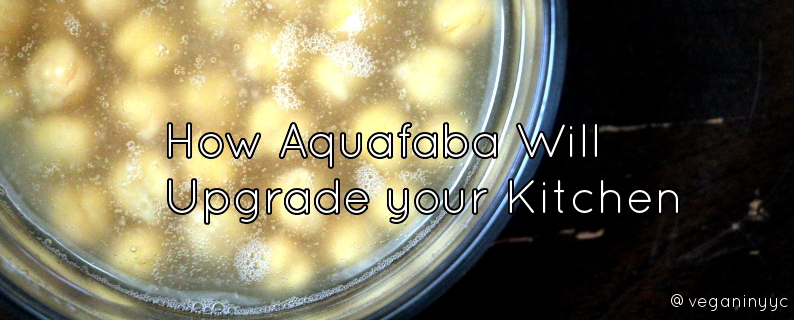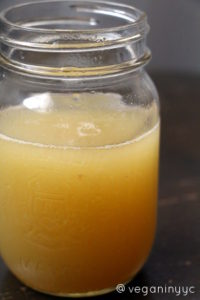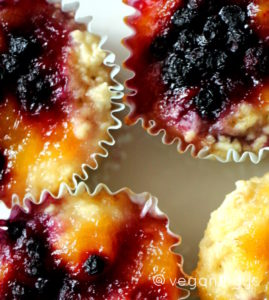
By now, there’s a very good chance you’ve heard of aquafaba, the miracle egg substitute so hot that even CNN wrote about it. But just in case you haven’t, let me be the first to tell you – the water that you cook your beans in is actually a low-calorie, low-carb, gluten-free and cost effective egg alternative. But I don’t expect you to just believe me – read on to discover how aquafaba will revolutionize your kitchen.
It has zero cholesterol and very few calories.
When aquafaba was first discovered [see a History of Aquafaba], very little was known about the nutritional properties of aquafaba. But in 2015, a scientific analysis showed that a tablespoon of chickpea aquafaba contains between 3 and 5 calories, is gluten-free and low-carb to boot. And like most vegan foods, contains no cholesterol.
It’s technically free (and super easy to get).
 Beans are one of the most cost-effective nutritious foods humans have at our disposal, particularly dry beans. And since aquafaba is literally the waste water you’d normally toss down the drain, this stuff is FREE. There’s a bit of a technique to getting the aquafaba to the perfect consistency, but it differs very little from your traditional methods of cooking beans and you can easily make aquafaba on the stovetop, pressure cooker or crockpot. Mary’s Test Kitchen has a great tutorial for making it with chickpeas, the most common source of aquafaba.
Beans are one of the most cost-effective nutritious foods humans have at our disposal, particularly dry beans. And since aquafaba is literally the waste water you’d normally toss down the drain, this stuff is FREE. There’s a bit of a technique to getting the aquafaba to the perfect consistency, but it differs very little from your traditional methods of cooking beans and you can easily make aquafaba on the stovetop, pressure cooker or crockpot. Mary’s Test Kitchen has a great tutorial for making it with chickpeas, the most common source of aquafaba.
But if you’re the kind of person who burns water, (no shame, I’m sure you’re great in other ways) you can literally just use the water from a can of chickpeas. Yes, all these years you’ve been dumping liquid gold down the drain. I was (and you probably are too) a bit mournful when I realized I’d wasted close to gallons of the stuff. But we never have to waste it again; although it only has a shelf life of a few days in the refrigerator, it can be frozen for future use.
It works in places traditional egg replacers can’t.
Standard egg substitutes like flax, chia, bananas, or dry mixes are great as binding agents in baked goods, and while the flavours and textures are not unpleasant, they certainly differ from the conventional. And good luck using them in places like cocktails, mayo or meringues.

But not only is aquafaba good as a binding agent. (see Zachary Bird’s CFC Recipe for a mind-blowing aquafaba based recipe) you can use it to make egg-free meringues, ranch, butter, and even a whisky sour. As people continue to experiment with aquafaba, it’s becoming apparent that this miracle liquid is also a fantastic emulsifier, and is helping improve the textures and flavours of vegan recipes that were already great, like nice cream.
Right now, aquafaba is in a state of culinary infancy; we are only just discovering the many ways that aquafaba can be used. To keep up with new innovations in aquafaba, be sure to join the Facebook group Vegan Meringue – Hits and Misses where kitchen pioneers are testing the limits of aquafaba daily. It’s also a fantastic source for recipes; check the files for tons of recipes that successfully utilize aquafaba. And don’t be afraid to get creative in your own kitchen; you’ll be surprised by the ways you can use it to transform your own favourite recipes.
How will you use aquafaba to upgrade your own kitchen prowess? If you’re an aquafaba connoisseur, how has aquafaba changed your world? Let me know down below! Until next time…
Discover more from Vegan In YYC
Subscribe to get the latest posts sent to your email.
